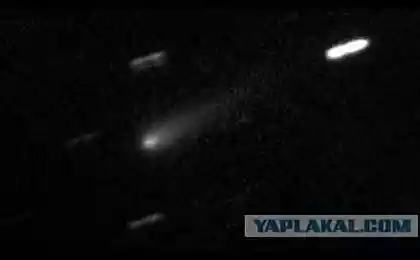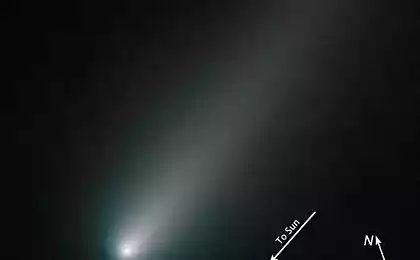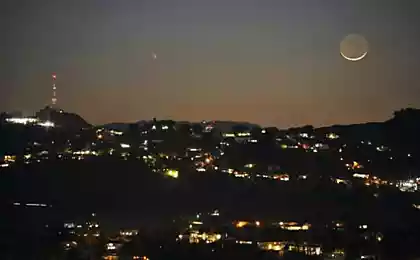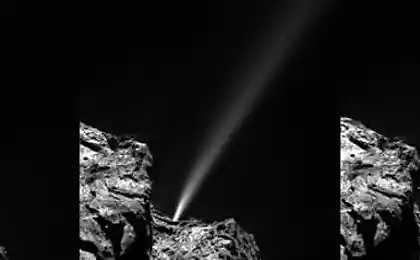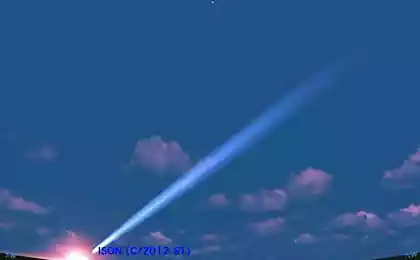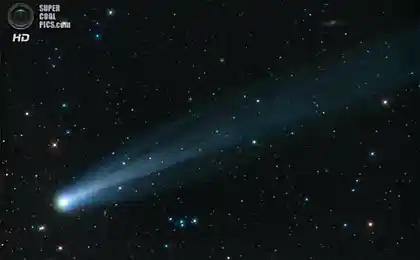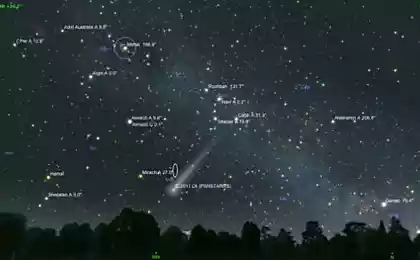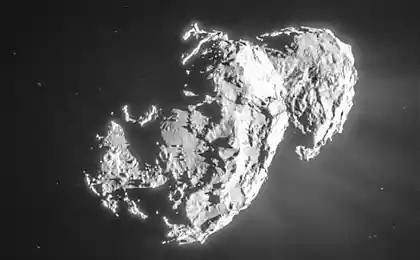721
The brightest for almost 50 years the comet
The brightest for almost 50 years will fly by the comet near the Sun
The unusually bright comet appears in the sky on the night of 15 to 16 of December. She named C / 2011 W3 Lovejoy in honor of its discoverer Australian Terry Lovejoy (Terry Lovejoy), whose name can be translated as "Love and joy».
It flies just 186 thousand. Km of the Sun's surface, which is more than 100 times closer than the distance between the Sun and Mercury. Astronomers detect it succeeded well before the approach to our luminary ground-based telescopes, but not space solar observatory SOHO .. According to astronomers, this is a very rare phenomenon, when the comet from "scratching Sun" opens with the Earth. The last time this event was 20 years ago. These invisible dark comets are visible only when the suit directly to the surface of the sun, and in the days grow long bright tails.
Maximum brightness "Love and Joy" to reach around 4 am Moscow time on December 16. And brightness twice even outshine Venus. Even the light of the sun does not shine her score himself. Its brightness will reach the scale of magnitudes -8 m for 16 of December. It's an incredible quantity. For comparison, shine the brightest in the last decades of the Hale-Bopp reached only 0, 7 m. Moreover, eating s assumption that "Love and Joy" can be flared so badly that become visible even during the day, close to the sun! So it was with the famous comet C / 1965 S1 Ikeya-Seki in 1965, which was recognized as the brightest comet of the last millennium. She was seen in Japan in the afternoon and was 60 times brighter than the full moon the moon. And now C / 2011 W3 Lovejoy is a chance it "beat».
However, we will have to show heaven with a favorable outcome. There is another sad version of events. So, the comet could fall apart on the approach to the sun. Or burn like a moth fire, flying too close to the "fire". Or do not dial the brightness.
Unfortunately, both versions of the events residents of European Russia will not see. Anyway the naked eye. But if anyone has a telescope, one can witness a rare phenomenon. Best visibility conditions will develop in the Pacific region and Eastern Siberia, where the early morning of 16 December, the eastern horizon can shine a very bright object with a long tail.
via
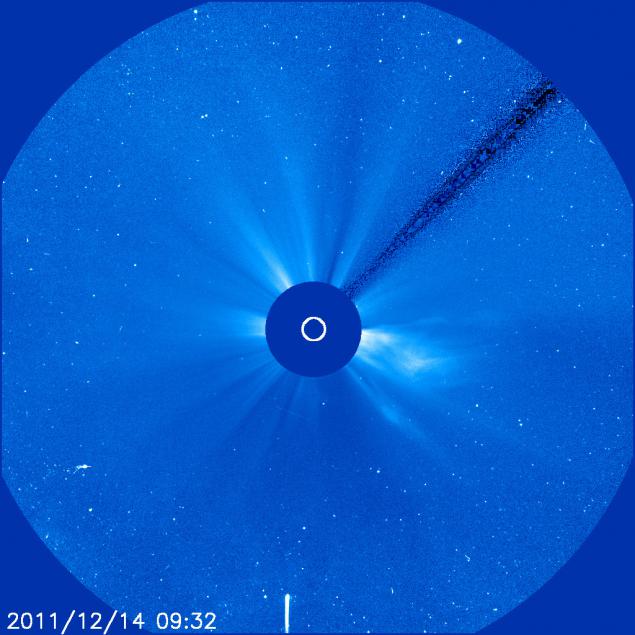
Source:
The unusually bright comet appears in the sky on the night of 15 to 16 of December. She named C / 2011 W3 Lovejoy in honor of its discoverer Australian Terry Lovejoy (Terry Lovejoy), whose name can be translated as "Love and joy».
It flies just 186 thousand. Km of the Sun's surface, which is more than 100 times closer than the distance between the Sun and Mercury. Astronomers detect it succeeded well before the approach to our luminary ground-based telescopes, but not space solar observatory SOHO .. According to astronomers, this is a very rare phenomenon, when the comet from "scratching Sun" opens with the Earth. The last time this event was 20 years ago. These invisible dark comets are visible only when the suit directly to the surface of the sun, and in the days grow long bright tails.
Maximum brightness "Love and Joy" to reach around 4 am Moscow time on December 16. And brightness twice even outshine Venus. Even the light of the sun does not shine her score himself. Its brightness will reach the scale of magnitudes -8 m for 16 of December. It's an incredible quantity. For comparison, shine the brightest in the last decades of the Hale-Bopp reached only 0, 7 m. Moreover, eating s assumption that "Love and Joy" can be flared so badly that become visible even during the day, close to the sun! So it was with the famous comet C / 1965 S1 Ikeya-Seki in 1965, which was recognized as the brightest comet of the last millennium. She was seen in Japan in the afternoon and was 60 times brighter than the full moon the moon. And now C / 2011 W3 Lovejoy is a chance it "beat».
However, we will have to show heaven with a favorable outcome. There is another sad version of events. So, the comet could fall apart on the approach to the sun. Or burn like a moth fire, flying too close to the "fire". Or do not dial the brightness.
Unfortunately, both versions of the events residents of European Russia will not see. Anyway the naked eye. But if anyone has a telescope, one can witness a rare phenomenon. Best visibility conditions will develop in the Pacific region and Eastern Siberia, where the early morning of 16 December, the eastern horizon can shine a very bright object with a long tail.
via

Source:
